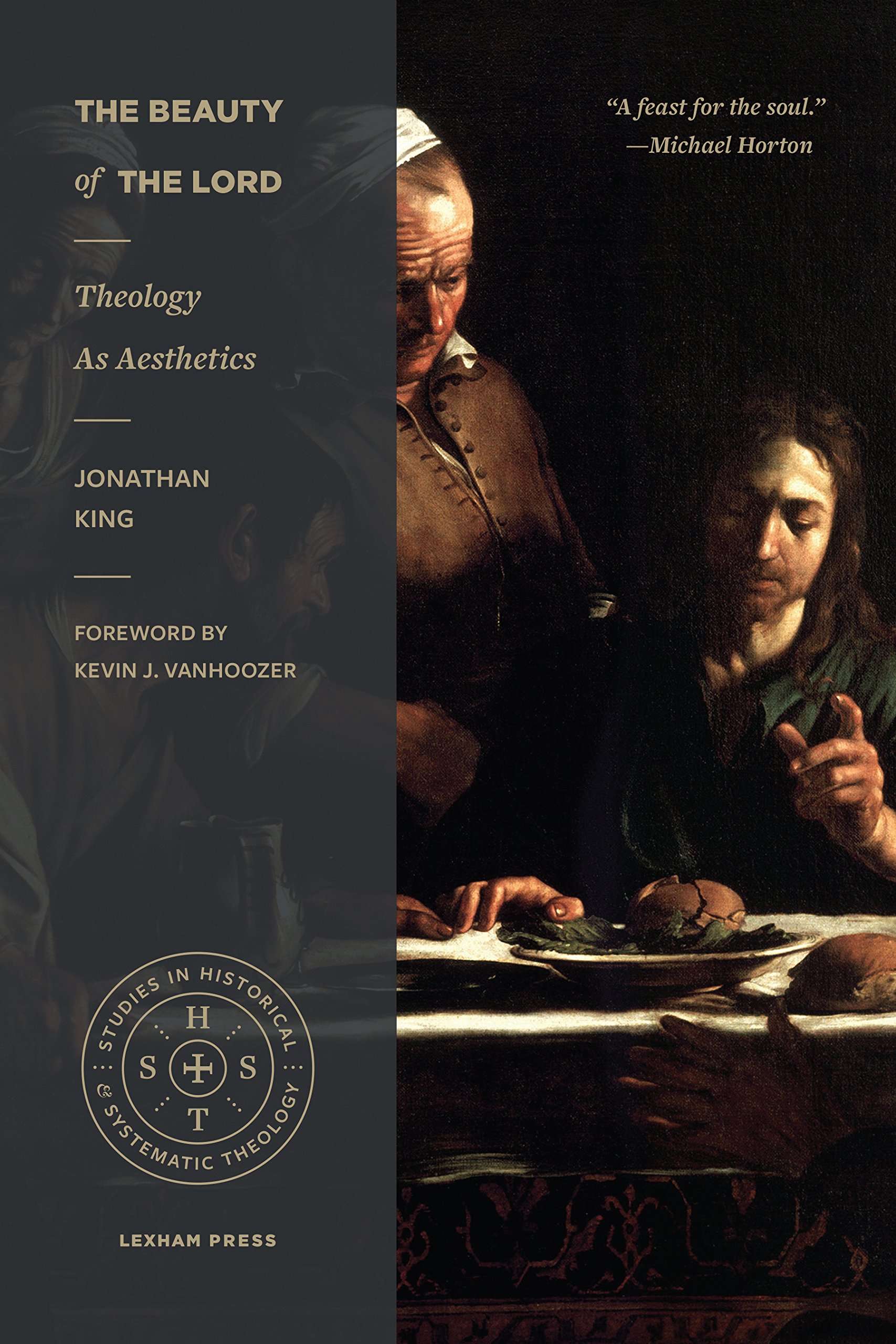A Brief Review & Summary from Books At a Glance
About the Author
Jonathan King (Ph.D., Trinity Evangelical Divinity School) is a lecturer in Faculty of Liberal Arts at the Universitas Pelita Harapan in Indonesia.
Table of Contents
- Introduction
- Beauty Triune
- Creation: Beauty’s Debut
- The Incarnation: Beauty Condescending
- The Cross: Beauty Redeeming
- Re-Creation: Beauty’s Denouement
- Conclusion
Appendix: The General Witness of Scripture to the Aesthetic Dimension
Brief Review
by Mark Coppenger
From tweets to blogs to articles to books, there is something of a groundswell of interest in the connections between God and aesthetics. For a half-dozen years, an ETS subgroup has offered a series of papers and panels on these topics. For example, the 2016 session was devoted to discussion of Anderson and Dyrness’s recently published, Modern Art and the Life of a Culture (reviewed in Books at a Glance), and the 2017 gathering focused on icons and the response of iconophiles, iconodules, and iconoclasts. (My own A Skeptic’s Guide to Arts in the Church: Ruminations on Twenty Reservations addresses aspects some of these phenomena.) Now Jonathan King’s The Beauty of the Lord: Theology as Aesthetics provides a major contribution to the field.
As he acknowledges and explains, the perspectives, agendas, and topics are many, but let me suggest that they fall into two broad categories—theological aesthetics (which begins with more traditional, prosaic theology and extends the subject to aesthetic matters) and aesthetic theology (which employs aesthetic concepts, principally ‘beauty’, to develop or recast theology). While there are a few verses, translations, and construals of beauty to encourage a bit of the latter, I think that the former approach is more promising. So I’m inclined to say, “One cheer for aesthetic theology!” Fortunately, King covers both broad approaches.
In the briefest of terms, here are several of my reservations regarding “aesthetic theology,” and, yes, regarding talk about “the beauty of the Lord”: 1. The biblical witness to the “transcendental” beauty of God is vastly smaller than the biblical witness to the truthfulness and goodness of God, so aesthetic eisegesis is an ever-present danger; prophets may thunder against heresy and wickedness in a way they shouldn’t rail against kitsch (though some, including Franky Schaeffer, have majored on this); 2. I think that the beauty in Creation is more a function of God’s love than a communication of his own beauty, for he wired us humans (as opposed to crocodiles and star-nosed moles) to appreciate certain looks and then provided us with those “looks” (e.g., in sunsets, human dramas, melodies, cherubic children’s faces) for our gratification; 3. Aesthetic theology tends to produce ecclesiological aesthetes, impatient with and even judgmental toward the fellowship of deplorables and too often forgetful of verses that cast church members as “offscouring” rather than as aficionados of artistry; 4. It tends to homogenize into ‘beauty’ important aesthetic and moral distinctions, and it gratuitously dismisses insightful, extra-biblical, aesthetic thought, e.g., the writings of Kant and Burke on “the sublime.”
That being said, I’ve enlisted the students of my just-completed seminar on aesthetic theology to provide chapter summaries of this considerable and admirable book:
Brief Book Summary (various writers)
Introduction
(Summarized by James Winfrey)
Beauty is rooted in the being and activity of God. The objective beauty of God can be seen in three primary parts: (1) God’s own immanent triune life, (2) the display of God’s own beauty in his external work: creation, salvation, and consummation, and (3) the person, work, and benefits of Jesus Christ. With this understanding of beauty in mind, the intent of The Beauty of the Lord is to develop a theology of beauty based on God’s plan in Christ. Thus the nature of beauty is pursued in a specifically biblical and systematic way from beginning to end.
Scholarship concerning the theology of aesthetics is far from homogeneous. There are four basic categories in the discipline: (1) natural theology of beauty, (2) theology of the arts, (3) religious aesthetics, and (4) theological aesthetics. Since there is little consensus in the discipline, a proper definition and understanding of beauty—as an intrinsic, transcendent, objective quality of things which, when perceived, pleases the mind by displaying a certain kind of fittingness (cf. Wolterstorff’s Art in Action)—ought to help bring more attention to and agreement within the field of theological aesthetics studies.
Since beauty corresponds to the attributes of God and is expressed through the theodrama of God’s eternal plan in creation, redemption, and consummation there ought to therefore be a consistent and fitting expression and outworking of this divine beauty in the life of the believer in Christ. For this reason, just as a Christian ought to seek to grow in goodness and appreciation of truth, the Christian ought also to strive to grow in beauty– increasingly delighting in God—precisely because God has displayed His beauty in the person and work of Christ.
Chapter 2: Beauty Triune
(Summarized by Andy Stearns)
King lays out his argument that Beauty is a Divine perfection. He supports this claim by appealing to four notable theologians: Anselm of Canterbury, Thomas Aquinas, Herman Bavinck, and Karl Barth. Each of these theologians ascribes to the Doctrine of Divine Simplicity (DDS), which is the main avenue the author uses to show that Divine beauty is most closely linked to the Glory of God. King then offers five arguments that will become the grounding of the following chapters, ultimately aiming at aesthetic that is uniquely Trinitarian. First, he argues that beauty is a divine attribute because it is associated with God’s glory in scripture. Second, the author argues that the nature of this beauty is the outworking of God’s glory both in outward works of God (ad extra) and in God himself (ad intra). Third, that God’s state of blessed delight (beatitude) is experienced by humans through. . .
[To continue reading this summary, please see below....]The remainder of this article is premium content. Become a member to continue reading.
Already have an account? Sign In
